Handwriting practice doesn’t always have to involve writing. This easy activity helps kids with visual processing difficulties or visual motor integration issues to address spatial and line awareness needed for neatness in handwriting while working on a fine motor component and form producing component that are essential for effective spatial use and line awareness in written work.
This activity is part of our month-long handwriting series where we are sharing creative and easy ways to address common handwriting issues in our 30 Easy Quick Fixes for Better Handwriting series.
You’ll also want to join the Sweet Ideas for Handwriting Help Facebook group where you can find support and resources for handwriting.
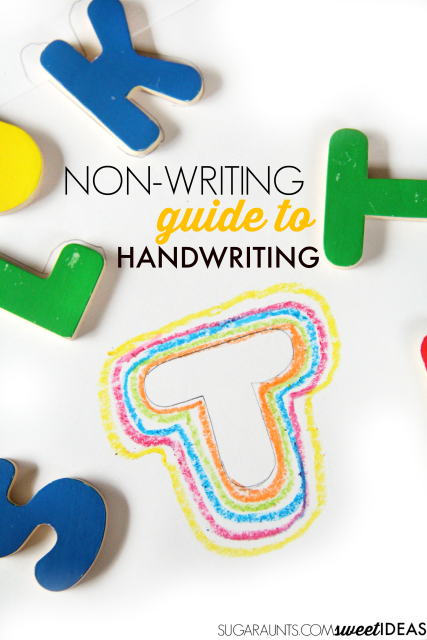
Spatial Awareness and Line Awareness Activity
This spatial awareness and line awareness activity is a powerful way to work on so many skills…without actually working on copying or writing. We’ve shared a similar activity to this one before with our Improve Handwriting with Cookie Cutters post.
In this activity, you’ll need just a few items to get started. (This post contains affiliate links.)
Pencil (Use a mechanical pencil and here’s why.)
Paper
Start by pulling some puzzle pieces out of the wooden frame. These wooden alphabet puzzle pieces are perfect for this activity because of their size, their simple colors without patterns, and the lack of plastic handle that some wooden puzzle pieces have. (These puzzles have the plastic handle that would get in the way for this activity, in case you are wondering what I’m talking about.)
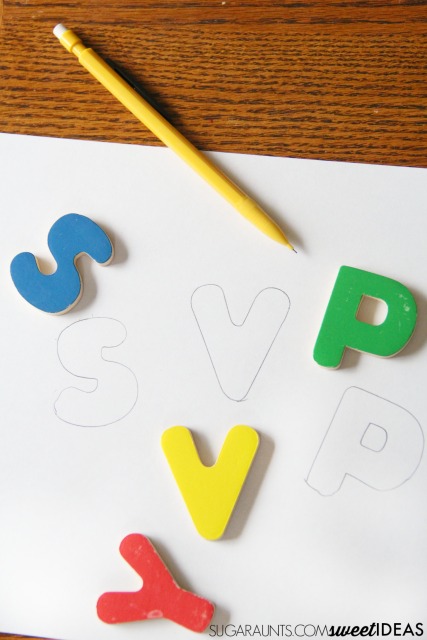
Bilateral Coordination in Handwriting
You’ll place a few letters on the paper and use the pencil to trace the puzzle piece. Tracing the puzzle piece is a great exercise in bilateral coordination. This skill is needed for efficiency in handwriting. When we write, we often move the paper to adjust for arm placement on the page. Using both hands together to move and adjust the paper on the desk as we write with our dominant hand helps us to write effectively. It can be awkward to trace the letters at first, but after a few tries, it should become easier.
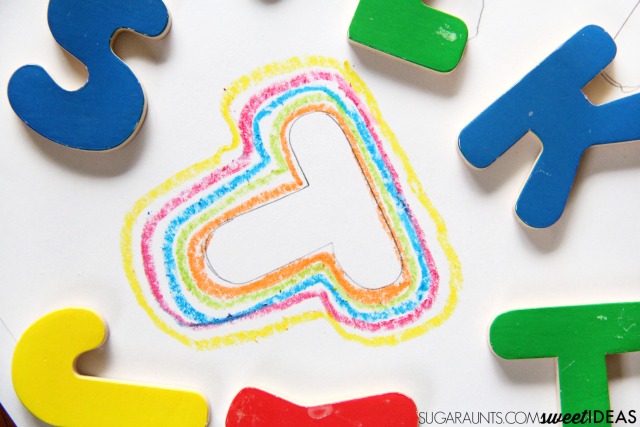
Note: If you are concerned about getting pencil marks on the edges of the puzzle pieces, use a mechanical pencil to trace. The plastic case of the pencil will rub up against the side of the puzzle piece and leave the puzzle letters pencil marking-free.
It is not necessary to trace all of the letters right-side up. In fact, positioning them in any position is a good exercise in form constancy for another portion of this activity (I’ll explain more about this part below!)
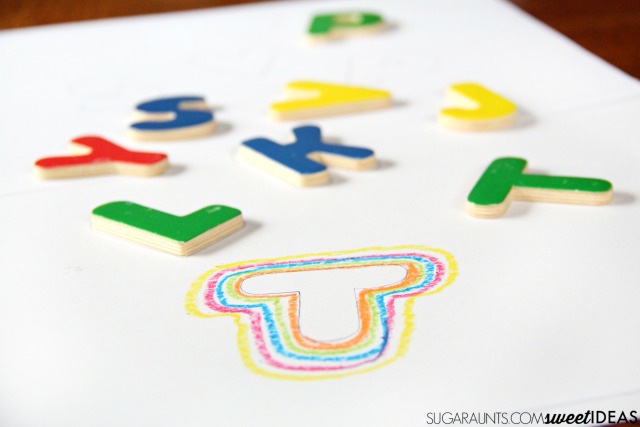
Visual Motor Integration and Handwriting
Next, remove the puzzle piece from the paper and use the crayons to trace around the pencil letter. You want to show the child how to trace the lines with different colors, leaving a small space between each color. This task helps in several ways. Tracing the lines in this manner helps to work on visual motor integration skills needed for appropriate line awareness and spatial awareness in handwriting.
Taking in the visual input that we receive while writing and creating written work in handwriting tasks requires visual motor integration to form letters, position them on lines, and space between the letters and words.
If your child is having trouble with this activity, try taking turns with different colors, like we did in this copying and spatial awareness activity.
Once you have traced (and traced and re-traced) the letters so that they have many colorful layers, try placing the puzzle pieces back onto the traced letters. Because some of the letters might be rotated or turned, locating and identifying the correct match for the puzzle pieces challenges the child to use form constancy skills. This is a skill needed for identifying letters or numbers (or shapes and real items) no matter how they are positioned.
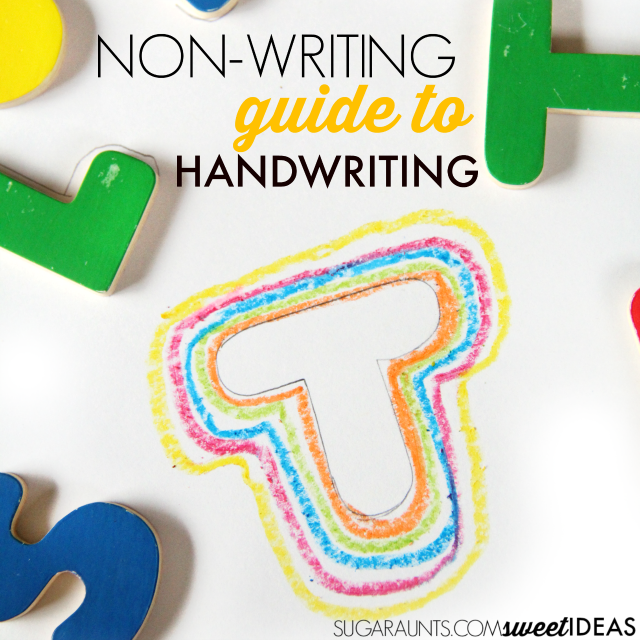
Looking for more creative ways to work on handwriting without actually working on written work? Try some of the fun ideas you can find here.
Be sure to check out all of the easy handwriting tips in this month’s series and stop back often to see them all.
You’ll also want to join the Sweet Ideas for Handwriting Practice Facebook group for more handwriting tips and tools.
New Feature...DOWNLOAD THIS POST AS A PDF! CLICK HERE






